You are here
Liebherr Group: Products & Services for United States of America (en)
Other websites for United States of America (en)
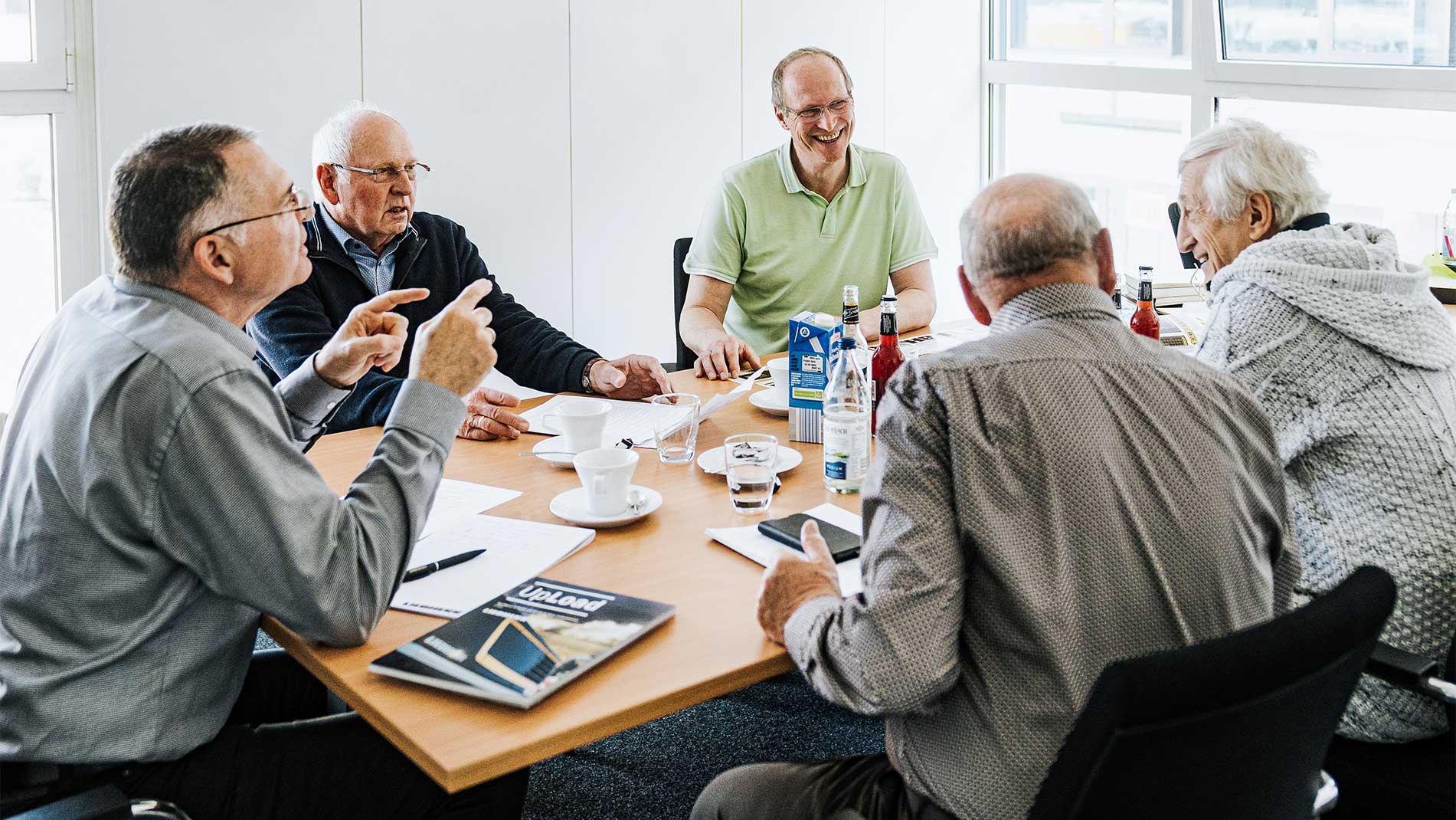
As we know, the future is based on the past, so in this edition we want to take a look at the history of Liebherr crane control systems.
In edition 2/2021 of our UpLoad magazine, we introduced you to the latest Liebherr crane control system – LICCON3 means that we are ready for the future. A fast databus, new programming language and software, significantly more storage space, greater computer power and improved security tools. As we know, the future is based on the past, so in this edition we want to take a look at the history of Liebherr crane control systems.
Mobile cranes operate for more than 30 years. So the control system must be durable and spare parts must be available. That was always an important aspect for us.
We invited four experts to talk to us about them. Three of them are already enjoying their well-earned retirement – Erwin Morath established our Control System Department and managed it for decades. Max Leicht managed the Electrics Department for many years and is an expert in production and assembly. And Karl Münst is a crane practitioner who has spent half of his life heading up our crane acceptance section. The group is rounded off by Klaus-Peter Brück. When he was a student, he wrote his dissertation on the launch of the LICCON (Liebherr Computed Control) system and may still contribute his experience for a few years in active professional life.

Erwin Morath: When I first came to Liebherr in 1985, there was a range of different hydraulic, electrical and electronic control systems, depending on the crane model. We only had a simple system of our own to limit the load moment (LMB). We therefore launched the LMB from PAT, a wellknown manufacturer at the time. However, electronics were only available with analogue systems and did not feature any variable programming options. New plug-in boards had to be developed for each crane.
Max Leicht: This plug-in board technology was only able to cover a certain amount of the crane control system. The requirements for the crane control system increased as a result of the ongoing development of our crane portfolio. That meant that new integrated circuits had to be developed on the plug-in boards. Over time, we developed around 100 plug-in boards with a range of functions. The whole thing became very difficult to handle, which affected both production and the supply of spare parts. A crawler crane, for example, required up to 24 different plug-in boards containing a range of functions.
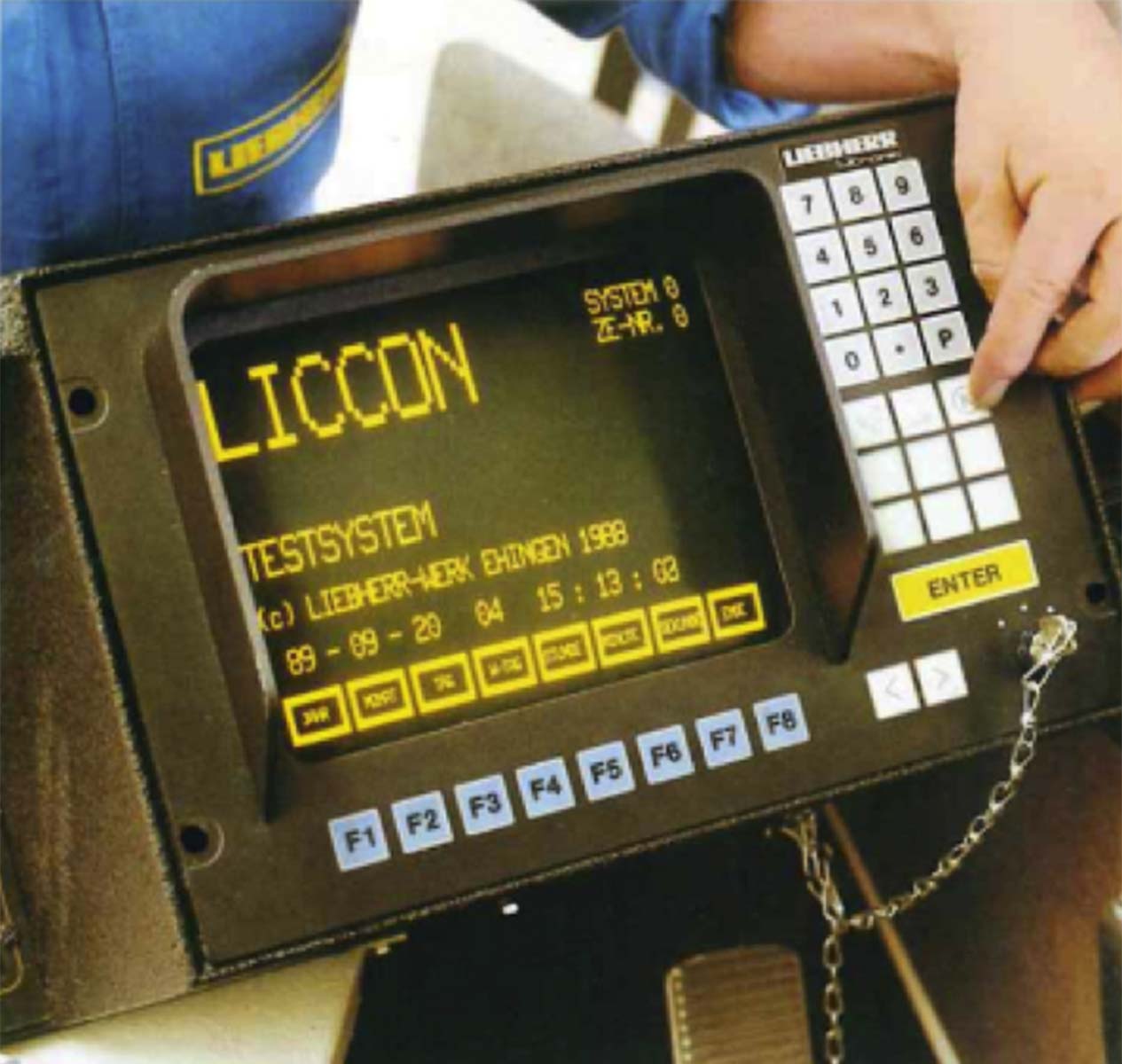
Erwin Morath: We took the first steps in 1985. We reduced and revised the existing analogue plug-in boards and developed programmable digital plug-in boards to replace them.
Max Leicht: That was enormously important to ensure we could continue to manufacture cranes. We were able to reduce the number of plug-in boards to just 20 – a massive step forward.
Klaus-Peter Brück: In the development of a new crane control system, therefore, one of the main objectives was to establish and retain the expertise we had within the company. What we needed was a flexible control system which we could extend and expand ourselves within Liebherr.
Erwin Morath: The standardisation of the hydraulic and electrical control systems was another major step forward. Starting in 1986, we employed additional personnel who had the expertise to implement our concept of a modern microprocessor control system.
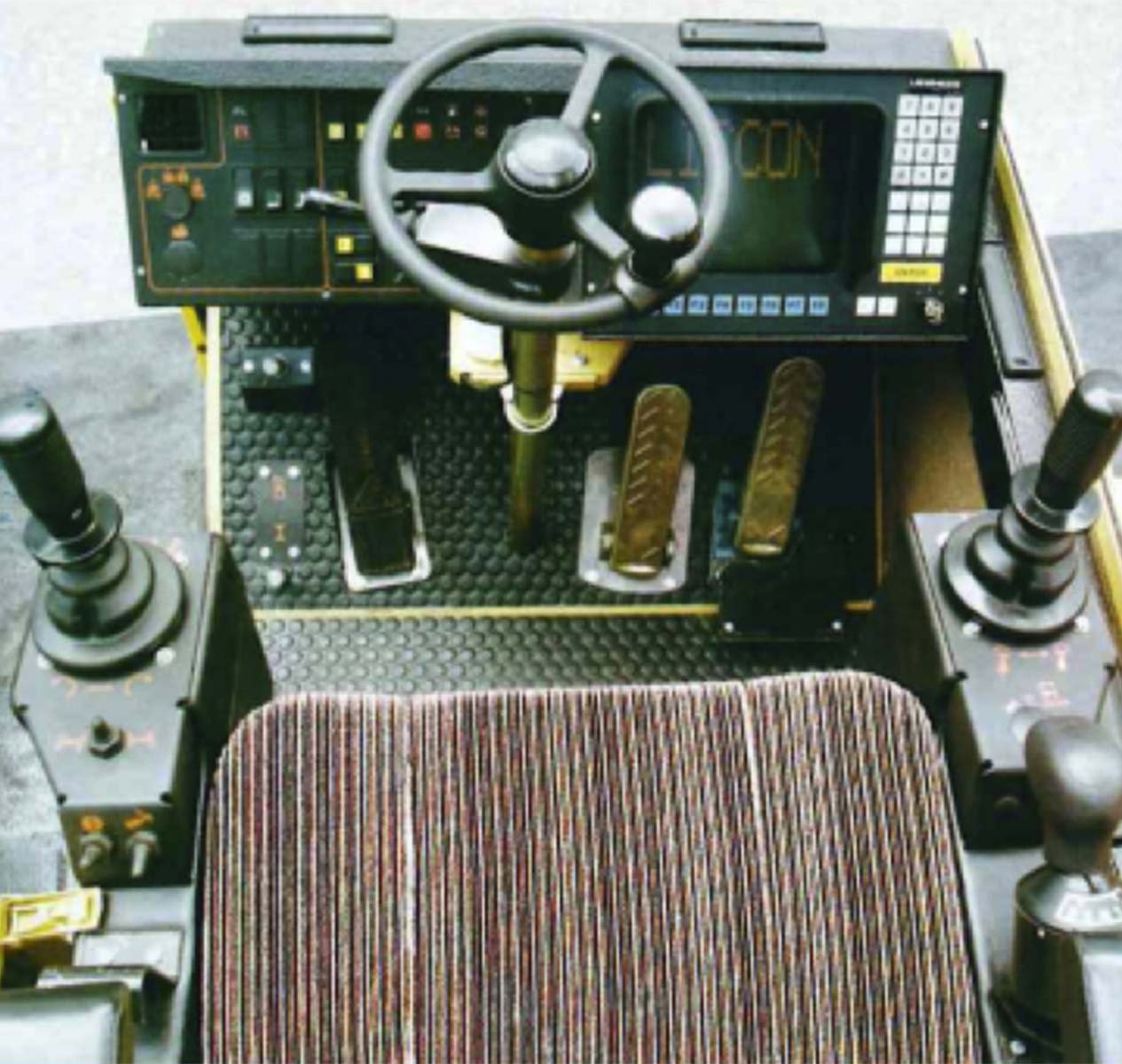
Erwin Morath: The standardisation of the hydraulic and electrical control systems was another major step forward. Starting in 1986, we employed additional personnel who had the expertise to implement our concept of a modern microprocessor control system.
Our objective in terms of the software was a Liebherr multiprocessor, multitasking operating system with an integrated diagnostic system. We developed our own programming system using a simple PLC language. The software was structured and management using a parts list generation system and a database. And to ensure that the software was reproducible, we linked this system to our commercial IT system. The LMB data from the structural engineering was transferred automatically in stages.
Klaus-Peter Brück: This was a massive benefit because before then, the data had to be entered manually. That was extremely time-consuming.
Erwin Morath: In retrospect we can certainly say that we achieved our objectives. The LICCON control system was unique in the industry and could not be copied. We managed to reduce expenditure and costs as well as achieve simplifications. The important thing from the very outset was to ensure availability. We wanted to be independent from external suppliers and therefore manufactured more and more components within the Liebherr Group.
We have laid the foundations for the future in the form of LICCON.
Klaus-Peter Brück: In 1988 we built four prototypes of the LTM 1035 featuring the LICCON control system and serial production started with the LTM 1120, which we unveiled at the Bauma in 1989. The PROGRESS 2000 project was particularly symbolic. At the time there was a great deal of rapprochement between the East and the West and Soviet SS-20 medium-range rockets were being scrapped as part of the disarmament treaties. We used the same chassis on which rockets were previously mounted to install the superstructure of our LTM 1120 – with the LICCON control system. One of the special cranes was also unveiled at the Bauma in 1989.

Erwin Morath: The LICCON was a universal control system which replaced everything else on the crane. It could not be copied because there were hardware components integrated in the control system whose logic we had created and programmed ourselves.
Max Leicht: The microprocessor system was a massive leap forwards. It meant that we now only had two plug-in boards. And a modern monitor. None of our competitors had a control system anything like it.

Karl Münst (laughing): One of my colleagues said: “Now they’ve really lost it – they’re installing a television in the crane.” Some customers were also rather sceptical at the start. But it was definitely the right thing to do. The new display features were simply fantastic.
The LICCON cranes also meant that the crane acceptance process was even faster as far as setting the parameters was concerned. The versatility of the new control system was impressive because it included a very wide range of operating modes. And the integrated test system provided us with a new, very convenient service. The launch of the LICCON control system laid the foundation stone for ensuring that all cranes could be controlled in exactly the same way. Our customers absolutely love that.
Klaus-Peter Brück: We were then able to set up the crane very easily using buttons, displaying the ballast, support and accessories on the screen. The operating data could also be displayed on the monitor, in other words boom length, maximum load, actual load, radius and much more. That was completely new. The crane operator had all the information he needed at a glance. It was also possible to view the load charts on the monitor. There were worlds between the new system and the old one.
The LICCON control system was unique and provided inspiration for developments on mobile cranes.
Karl Münst: Actually, we hardly had any problems at all. For us in the acceptance section, it was important that we were kept up to date right from the start. That worked well because the developers worked very closely with us and spent a great deal of time outside on the crane. And we received extensive training.
Klaus-Peter Brück: In fact some very close friendships were created at that time. Our colleagues were very open and highly motivated. And we were also in close contact with customers who then worked with the prototypes. These cranes had to be repeatedly updated to the latest version. We had particularly close contacts with Uwe Langer at Riga Mainz, with whom we also discussed my idea of load capacity interpolation for intermediate lengths and who then tested the idea after it had been implemented. The idea came from my own personal experience as I grew up in a crane company.
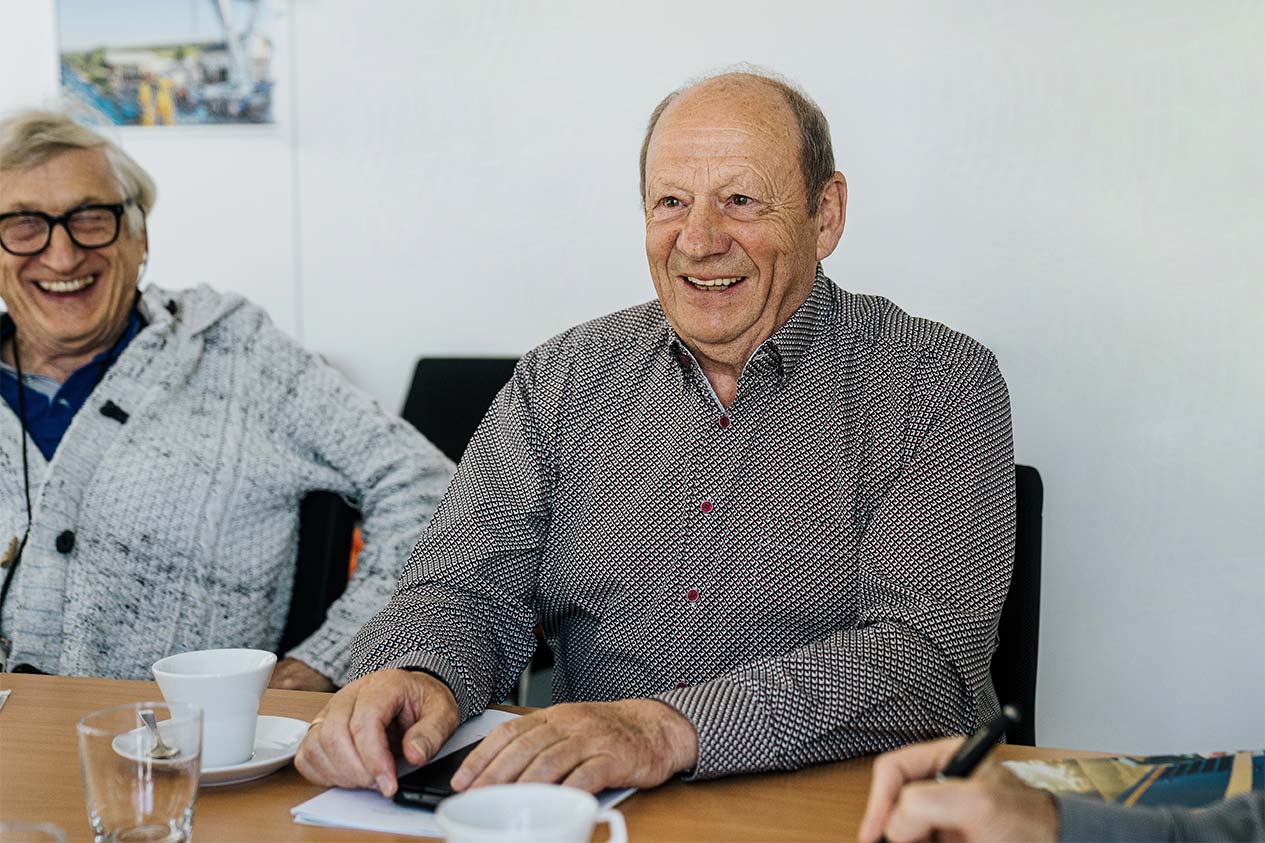
Max Leicht: The new control system also had an influence on crane production and our colleagues first had to get used to this new technology. Many of the production processes were changed. We had to give our colleagues lots of training and support. But at the end of it all, it all worked very well.
Erwin Morath: In the mid-90s we developed a crane job planner which enable jobs to be planned and documented on a PC in an office. The special feature of this was that the current crane data were used and the layout of the display on the monitor in the crane corresponded. The scope and benefits of our planning tool were so great that it is still pretty much the same today and is used extensively by our customers. Currently we are replacing this tool with the new Crane Planner 2.0.
Another major milestone was the development of the LSB (Liebherr System Bus) bus system, which required no hardware modifications to the central unit. It enabled the cabling to be significantly reduced and safety levels enhanced. Analogue sensors were replaced with digital ones. The sensors delivered the intelligence. That enabled us to unveil the first mobile crane in the world with a databus system at the Bauma in 1998 in the form of the LTM 1030/2.
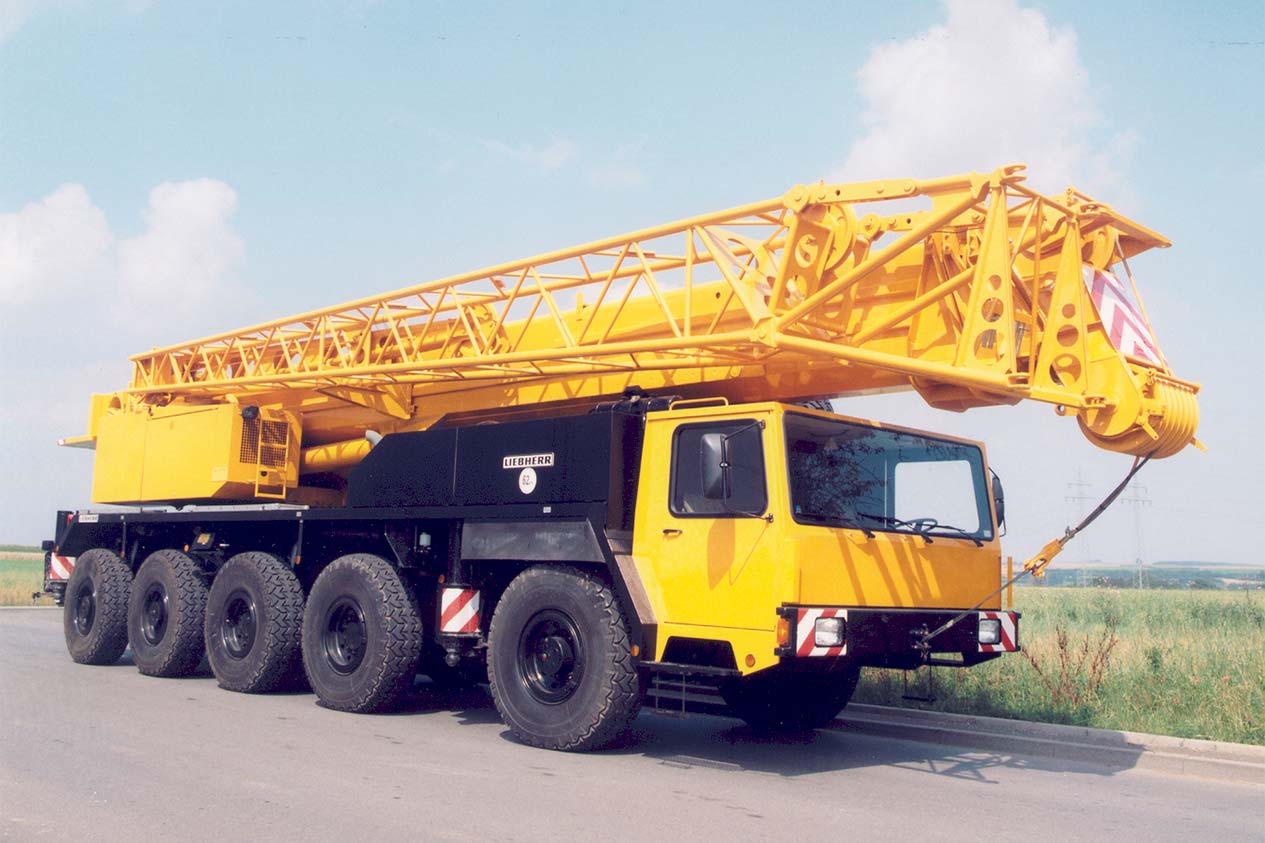
Max Leicht: In principle there were only three wires and no shielded cables any longer. Naturally, that delivered massive benefits for the electrical assembly process.
Karl Münst: The development of the working range limiting system was an important step for practical crane operations. It means that the LICCON control system can limit the hoist height, radius and working angle. In addition, edges can be defined which must not be exceeded during crane operations.
Max Leicht: The pioneering development of the TELEMATIK telescoping cycle system in 1996 with a single cylinder would not have been conceivable without the LICCON control system. The whole thing was automatic – all the operator had to do was enter the length of the telescopic boom and the telescoping path and then press the master switch. The control system did everything else. That was yet another unique feature on the mobile crane market at the time.
The sensitivity of the crane movements is perfect with the LICCON control system.
Erwin Morath: At the end of the 90s we developed to cascading universal control units for the crane chassis which could cover all the vehicle’s functionalities. This also included a universal keyboard unit. This meant that we managed to standardise all our cranes with the same components, a massive benefit to our customers for their operators. The engine control units were included and the superstructure control unit was connected. This enabled us to make a whole host of developments on the crane chassis, such as the speed-dependent rear axle steering. The new universal control units then also provided the basis for the next LICCON2 control system generation, which we launched in 2007.

Erwin Morath: LICCON had reached the limits of its computer performance and storage space. We also had to purchase new hardware components. One of the new features was the colour monitor. Another factor was the fact that the safety requirements were getting more and more stringent. New applications, such as the VarioBase® variable supporting base, would not have been possible without the new development.
Klaus-Peter Brück: The new hand control panel BTT also enabled the axle suspension to be controlled from outside the crane, which I first managed to achieve in 1988 on an LTM 1070 from our crane company in analogue form with the help of Max Leicht (laughs). This application was once again developed from personal experience and resulted in a major simplification of the supporting operation.

Karl Münst: Operating the crane with LICCON2 was much more convenient – the BTT control and display unit allowed the crane to be set up easily and safely. Extending the outriggers, detaching the hook block and installing the auxiliary equipment - all by remote control. Initially the BTT required a little bit of getting used to, but now nobody will consider buying a crane without it.
Klaus-Peter Brück: LICCON2 also delivers the option of a simple and therefore cost-effective extension to create a complete remote control system for the crane. In addition to the relevant software on the crane, all that is required is a console with two master switches to which the existing BTT is plugged in. A significant advantage for the crane operator is that the console can also be used for other cranes with the LICCON2 control system which are programmed for remote control. It couldn’t be any more economical.
Thank you very much for your insights into the creation of the LICCON crane control system and pioneering developments during the years that followed. Now we are about to launch the third generation, the LICCON3, which is currently undergoing an intensive phase of testing. Visitors to the Bauma in October will be able to look at two crane models featuring LICCON3.
This article was published in the UpLoad magazine 02 | 2022.